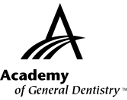|
Exercise No. 348
Subject Code: 017
Dental Materials
The 15 questions for this exercise are based on the article, "Marginal gap, cement thickness, and microleakage of 2 zirconia crown systems luted with glass ionomer and MDP-based cements", on pages 67-70. This exercise was developed by Anthony S. Carroccia, DDS, MAGD, ABGD, in association with the General Dentistry Self-Instruction committee.
|
Reading the article and successfully completing this exercise will enable you to:
- identify the effects of either luting agent on zirconia restorations;
- recognize that efficiency is not reduced by using either cement; and
- understand the advantages of microleakage studies.
|

